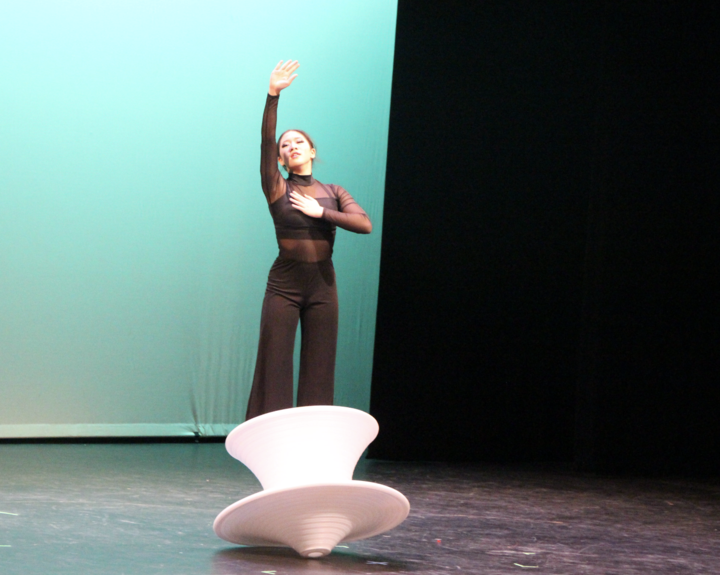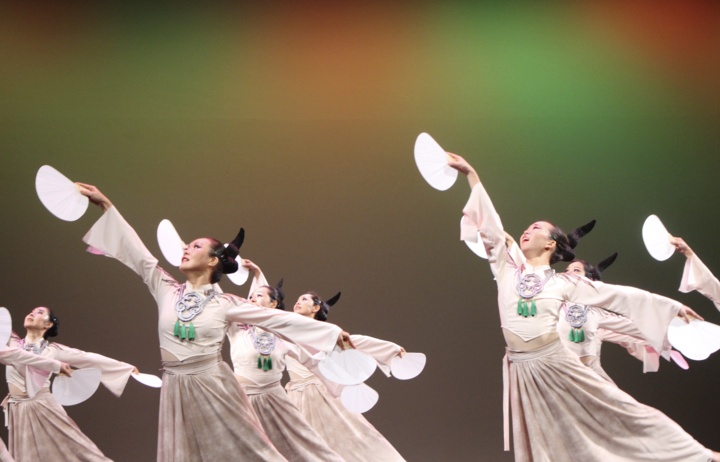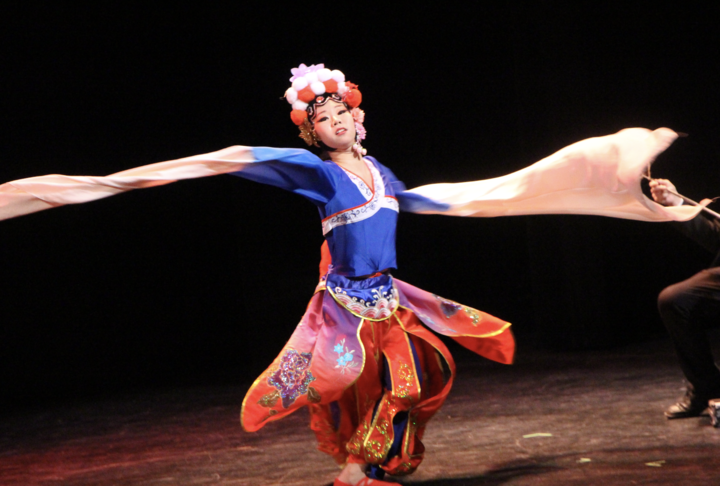Welcoming in the year of the snake, the Lunar New Year celebration took place at Wayland High School (WHS) on Sunday, Feb. 2. The lunar calendar is used all across Asia and is based on the cycle of the moon instead of the revolutions of the Earth around the Sun. According to WHS Chinese teacher and National Chinese Honors Society advisor YuPing Wang, the Lunar New Year is also called the Spring Festival. The holiday is celebrated across countries in Asia such as Korea, Japan, Vietnam and more.
The Lunar New Year celebration gives students and residents of Wayland an opportunity to show pride in their culture in a holiday that gets little national recognition outside of the Asian community.
“It means a lot to connect with my culture, especially since in the [United States], people only celebrate New Year’s on Jan. 1,” senior and host Fiona Wang said.
As people entered the doors of the North Building, they were greeted with traditional Chinese art. Additionally, the tables in the commons were covered with red table cloths and different displays of traditional items such as cups and tea pots. Stands were also available with activities and opportunities to learn about calligraphy or tea.
“[The celebration] is a very good opportunity for people from different cultural backgrounds to know the Asian culture,” Y. Wang said.
In the auditorium, more performers went onto the stage to display their talents to the audience. Wayland residents and other performers from neighboring towns came to share their experiences and talents.
“We have excellent Wayland kids doing all sorts of arts, dance, singing and other kinds of performing sports,” host and organizer Jun Wan said.

The performance started with a speech from Wan, wishing the audience a happy new year with health and good luck. He first delivered this speech in Chinese and then translated it to English. Afterwards, Wan welcomed State Senator Edward Markey, Representative Carmine Gentile, Police Chief Ed Burman, Loker School Principal Brian Jones and WHS Principal Allyson Mizoguchi to the stage. Lastly, senior MC’s Zack Zhang and F. Wang and others came onto the stage and introduced the Wayland Middle School (WMS) Chinese students as the first act.
According to Wan, the high school and middle school first began performing at the Lunar New Year celebration in 2018 and have had regular performances since. This year, WMS students sang “Gong Xi Gong Xi” and performed a lion dance, which they explained brought good luck. Later, several students came back on stage and performed “Fairytale” with many different instruments and singers.
WHS Chinese students and members of the Chinese National Honors Society (CNHS) came onto the stage to sing “The Moon Represents My Heart.” The honors society helped with preparation and decoration.
“Students join [CNHS] to get a better understanding of the Mandarin language and Chinese culture,” Y. Wang said.
Some of the performances on stage included Diablo sticks or Chinese yo-yo from the Newton Chinese Language School. There was a showcase of Han Fu or traditional Chinese clothes as well as a variety of musical performances from Erhu to Chinese Opera. The festival also included various styles of dances, one of which was performed by WHS freshman Sophia Wan.
“Dancing is one of my passions,” S. Wan said. “It’s a great way to express myself, and I have been doing it since I was four years old.”
S. Wan choreographed this dance with help from her dance instructor. She was inspired by a unique top-like chair to create a variety of different movements that displayed grace, longing and a deep sense of emotion.
“I showed [the chair] to my teacher along with some other inspirations that I’ve seen,” S. Wan said. “I [said], ‘oh, I can work with that,’ and then we made this dance together.”
The style of the dance was a traditional Chinese folk-interpretive performance that told a deep story and displayed profound emotion through expressive and eloquent movements.
“The story is about a lone traveler and they’re on their own little island,” S. Wan said. “The small chair that I was spinning on was that sort of island. It’s a story of leaving the island and coming back to it. There’s parts where I let go, but then I always come back. At the very end, I push it away and can move on with my life.”

Other dancers used a similar interpretive style. There was a dance that symbolized fire near the beginning of the show while the last performance represented the flight of a bird that was danced by the Dongfang Dance Troupe.
“Planning the yearly celebration is a long process that takes a lot of time and effort,” J. Wan said. “Every year we do a retrospective. We figure out what we can still improve [and] what we did well.”
The planning starts around November when families and volunteers gather every week to organize each event and find performers to go on stage. In years past, the organizers exclusively had professional performers who were experts in Chinese folk arts, dances and other artistic performances. Starting last year, they began to include more local performers and Wayland kids who wanted to showcase their talents. J. Wan estimated it took around seventy to one hundred volunteers to get the event running.
This event is an opportunity for Asian Wayland residents to celebrate their culture as well as a place for some to explore different customs from their own.
“We all come from different ethnic groups,” J. Wan said. “[The Lunar New Year Festival] is an amazing opportunity for people to realize that more cultures are present in this community. Chinese or East Asian culture is so rich and it is 5,000 years old, so there’s a lot to offer.”
Editor’s note: The sentence “According to WHS Chinese teacher and National Chinese Honors Society advisor YuPing Wang, the Lunar New Year is called the Chinese New Years.” was changed to “According to WHS Chinese teacher and National Chinese Honors Society advisor YuPing Wang, the Lunar New Year is also called the Spring Festival.According to WHS Chinese teacher and National Chinese Honors Society advisor YuPing Wang, the Lunar New Year is also called the Spring Festival.”




